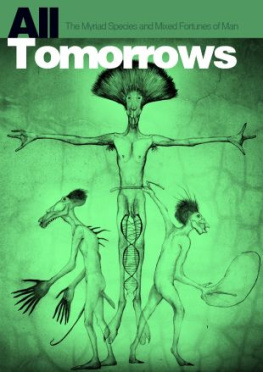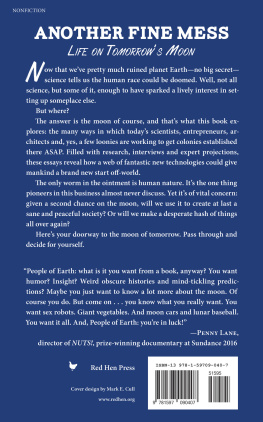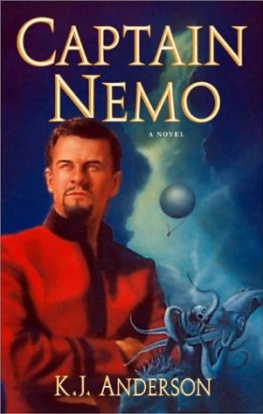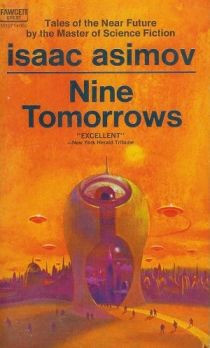Nemo Ramjet - All Tomorrows
Here you can read online Nemo Ramjet - All Tomorrows full text of the book (entire story) in english for free. Download pdf and epub, get meaning, cover and reviews about this ebook. year: 2008, genre: History. Description of the work, (preface) as well as reviews are available. Best literature library LitArk.com created for fans of good reading and offers a wide selection of genres:
Romance novel
Science fiction
Adventure
Detective
Science
History
Home and family
Prose
Art
Politics
Computer
Non-fiction
Religion
Business
Children
Humor
Choose a favorite category and find really read worthwhile books. Enjoy immersion in the world of imagination, feel the emotions of the characters or learn something new for yourself, make an fascinating discovery.
- Book:All Tomorrows
- Author:
- Genre:
- Year:2008
- Rating:5 / 5
- Favourites:Add to favourites
- Your mark:
- 100
- 1
- 2
- 3
- 4
- 5
All Tomorrows: summary, description and annotation
We offer to read an annotation, description, summary or preface (depends on what the author of the book "All Tomorrows" wrote himself). If you haven't found the necessary information about the book — write in the comments, we will try to find it.
All Tomorrows — read online for free the complete book (whole text) full work
Below is the text of the book, divided by pages. System saving the place of the last page read, allows you to conveniently read the book "All Tomorrows" online for free, without having to search again every time where you left off. Put a bookmark, and you can go to the page where you finished reading at any time.
Font size:
Interval:
Bookmark:
Nemo Ramjet
Alltomorrows
All Tomorrows
A Billion Year Chronicle of the Myriad Species and Varying Fortunes of Man
Nemo Ramjet
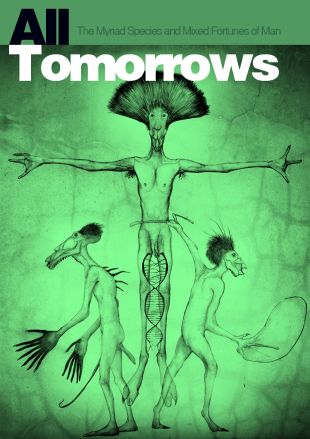
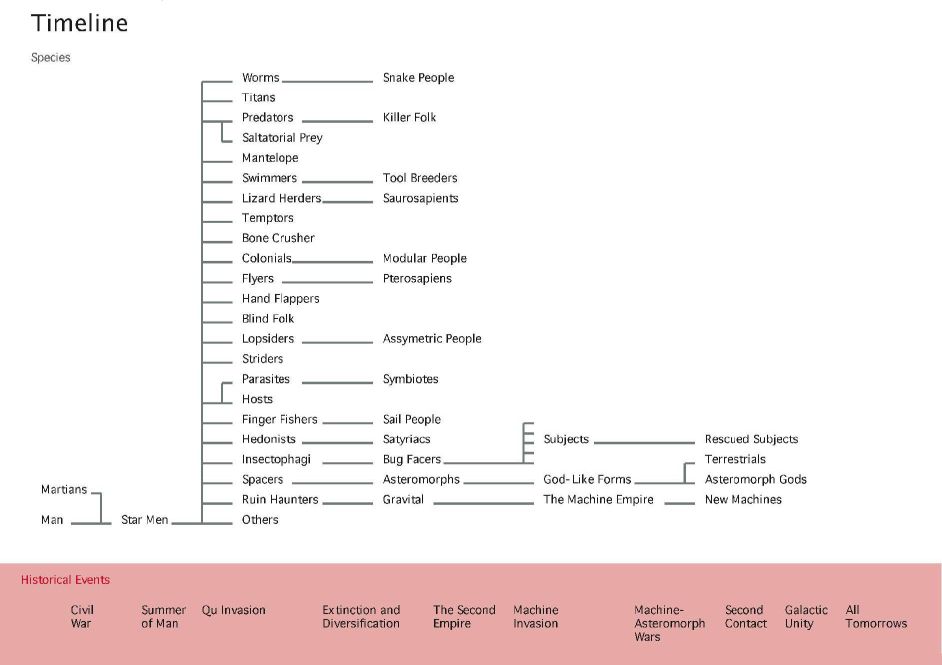
After millennia of earthbound foreplay, Mankinds achievements on a noteworthy level began with its political unification and the gradual colonization of Mars. While the technology to colonize this world had existed for some time, political bickering, shifting agendas and the sheer inertia of comfortable, terrestrial usurping had made this step seem more distant than it actually was.
Only when the risks clearly began to present themselves, only when Earths environment began to buckle under the strain of twelve billion industrialized souls, did Mankind finally take up the momentous task.
All through the decades, traveling to, and later settling on Mars had been envisioned as quick, relatively easy affairs; complicated but feasible and manageable in short term. As the push finally came to a shove, it was realized that this was not the case.
It had to go step by step. Atmospheric bombardment by genetically-tailored microbes slowly generated a breathable atmosphere in a cycle that took centuries. Later, a few cometary fragments were knocked off-course to bring forth seas, oceans; water. When the wait was finally over, remnants of Earths flora and fauna were introduced as specially-modified Martian remakes.
When everything was ready, people came from their crowded world. They came in one-way ships; fusion rockets and atmospheric gliders, packed to the brim with colonists, sleeping in dreams of a new beginning.
The first steps on Mars were taken not by astronauts, but by barefoot children on synthetic grass.

A lander ferries the first people to the pre-terraformed eden of Mars.
For several hundred years Mars remained as a backwater; prospering but still dim compared to the splendor of Earth, which was glowing brighter than ever before. Thanks to the relocation of environmentally demanding industries to Mars, Earth could usurp everything, without having to damage its tired biosphere. This was the Terrestrial Heyday; the climax of economic, cultural and social development on old Earth.
This, however, was not to last. Like the gradual separation of America from her Colonial mother, the governments of Mars adopted a new, Martian identity. They became the Martian Americans.
The difference between Earth and the Mars was not only political. A few generations in the lighter gravity gave the new Americans a spindly, lithe frame that would look surreal in their old home. This, combined with a certain amount of genetic engineering, took the Martians separation to a new level.
For a while the silent schism between the two planets was mutually accepted, and the balance of power hung in an edgy equilibrium. But the Terra-Martian standoff did not, could not last forever. With limitless resources and an energetic population, Mars was bound to take the lead.

The Martian turnover was expected to occur in two ways; either through long-term economical gains or by a much shorter but painful armed conflict. For almost two hundred years, the former method seemed to take effect, but this gradual stretch eventually did break in a most destructive way.
Almost since its establishment, Martian culture was suffused with an explicit theme of rebellion against Earth. Songs, motion pictures and daily publications repeated these notions again and again until they became internalized. Earth was the old, ossified home that held humanity back, while Mars was new; dynamic, active and inventive. Mars was the future.
This ideology eventually reached its semi-paranoid, revolutionary apex. Roughly a thousand years from now, the nations of Mars banned all non-essential trade and travel with Earth.
For Earth, it was a death sentence. Without the resources and industries of Mars, the Terrestrial Heyday would quickly devolve into a pale shadow of its former glory. Since a trade of essential goods continued, nobody would starve. But for every citizen of Earth, the Martian boycott meant the loss of up to three fourths of their yearly income.
Earth had no choice but to reclaim its former privileges, by force if necessary. Centuries after her political unification, Terra geared up for war.
Most thinkers (and fantasists) of previous times had imagined interplanetary war as a glorious, fast paced spectacle of massive spaceships, one-man fighters and last-minute heroics. No fantasy could have been further from the truth. War between planets was a slow, nerve-wracking series of precisely timed decisions that spelled destruction on biblical scales.
Most of the time the combatants never saw each other. Most of the time the combatants were not there at all. War became a duel between complicated, autonomous machines programmed to maximize damage to the other side while trying to last a little longer.
Such a conflict caused horrendous destruction on both sides. Phobos, one of Mars moons, was shattered, and rained down as meteorite hail. Earth received a polar impact that killed of one third of its population.
Barely escaping extinction, the peoples of Earth and Mars made peace and re-forged a united solar system. It had cost them more than eight billion souls.
The survivors agreed that massive changes were necessary to ensure that such a war never occurred again. These reforms were so comprehensive that they entailed not political, economical but biological changes as well.
One of the greatest differences between the people of the two planets was that over time, they had almost become different species. It was believed that the solar system could never completely unify until this discrepancy was overcome.
The answer was a new human subspecies, equally and better adapted not only to Earth and Mars, but to the conditions of most newly terraformed environments as well. Furthermore, these beings were envisioned with larger brains and heightened talents, making them greater than the sum of their predecessors.
Normally, it would be hard to convince any population to make a choice between mandatory sterilization and parenting a newfangled race of superior beings. However, memories of the war were still painfully fresh, and it was easier to implement these radical procedures in the wake of such slaughter. Any resistance to the birth of the new species did not extend beyond meager complaints and trivial strikes.
In only a few generations, the new race began to prove its worth. Organized as a single state and aided by the technological developments of the war, they rapidly terraformed and colonized Venus, the Asteroids and the moons of Jupiter and Saturn.
Soon however, even the domain of Sol grew too small. The new people who inherited it wanted to go further, to new worlds under distant stars. They were to become the Star People.

Font size:
Interval:
Bookmark:
Similar books «All Tomorrows»
Look at similar books to All Tomorrows. We have selected literature similar in name and meaning in the hope of providing readers with more options to find new, interesting, not yet read works.
Discussion, reviews of the book All Tomorrows and just readers' own opinions. Leave your comments, write what you think about the work, its meaning or the main characters. Specify what exactly you liked and what you didn't like, and why you think so.

